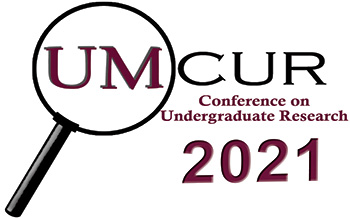Project Type
Presentation
Faculty Mentor’s Full Name
Mizuki Miyashita
Faculty Mentor’s Department
Linguistics
Abstract / Artist's Statement
English language learners (ELLs) are the fastest-growing demographic in K-12 classrooms across the United States (National Education Association, 2020). Often, due to a lack of specialized ESL (English as a second language) programs, ELL students are directly placed into a mainstream classroom with no additional support. This tasks teachers with attending to ELLs’ unique needs while also instructing the entire class. Scaffolding is a teaching method that utilizes a student-centered learning (SCL) approach, and it has been increasingly incorporated by educators to enhance student engagement and performance. While positive effects of scaffolding have been reported, its effectiveness when utilized with ELLs is understudied. To address this issue, this study observes ELL students in an SCL environment and obtains insight into the effectiveness of scaffolding when assisting ELLs.
I hypothesize ELL students will exhibit increased performance in sight-word identification, alphabetic recognition, and writing accuracy, after receiving assistance from an ESL specialist in their scaffolded learning setting. The method of this study takes an observational approach. I work side-by-side with ELL students, for thirty minutes a day, following along with the entire group lesson during instruction. Students’ growth is observed for two-months, and pre- and post-tests are administered to measure their improvement in English literacy skills.
The significance of this study is as follows. SCL paired with ESL-specific scaffolding can benefit ELLs, because it fills the gap between what the student can do with help and what they can do independently. ESL assistance through scaffolding provides ELL students with sufficient support to appropriately achieve the learning goals primarily on their own, and ELLs can gain the confidence that leads to their academic success. By implementing an SCL approach paired with individualized scaffolding, as opposed to a traditional "pull-out" ESL method, teachers are able to support their students while they remain in class and complete the same assignments as their peers. In order to meet the changing needs of students in the United States, teachers of today and the future must adapt their skill set and expertise to meet the learning needs of students who speak English as a second language.
National Education Association. (2020, July). English Language Learners. Retrieved from National Education Association: https://www.nea.org/resource-library/english-language-learners
Category
Social Sciences
Oral presentation
Applied Research and Reflective Practice.pdf (226 kB)
Applied Research and Reflective Practice
Supporting Middle-Elementary-Age, Second-Language English Speakers: The Effects of Student-Centered Learning and Scaffolding
English language learners (ELLs) are the fastest-growing demographic in K-12 classrooms across the United States (National Education Association, 2020). Often, due to a lack of specialized ESL (English as a second language) programs, ELL students are directly placed into a mainstream classroom with no additional support. This tasks teachers with attending to ELLs’ unique needs while also instructing the entire class. Scaffolding is a teaching method that utilizes a student-centered learning (SCL) approach, and it has been increasingly incorporated by educators to enhance student engagement and performance. While positive effects of scaffolding have been reported, its effectiveness when utilized with ELLs is understudied. To address this issue, this study observes ELL students in an SCL environment and obtains insight into the effectiveness of scaffolding when assisting ELLs.
I hypothesize ELL students will exhibit increased performance in sight-word identification, alphabetic recognition, and writing accuracy, after receiving assistance from an ESL specialist in their scaffolded learning setting. The method of this study takes an observational approach. I work side-by-side with ELL students, for thirty minutes a day, following along with the entire group lesson during instruction. Students’ growth is observed for two-months, and pre- and post-tests are administered to measure their improvement in English literacy skills.
The significance of this study is as follows. SCL paired with ESL-specific scaffolding can benefit ELLs, because it fills the gap between what the student can do with help and what they can do independently. ESL assistance through scaffolding provides ELL students with sufficient support to appropriately achieve the learning goals primarily on their own, and ELLs can gain the confidence that leads to their academic success. By implementing an SCL approach paired with individualized scaffolding, as opposed to a traditional "pull-out" ESL method, teachers are able to support their students while they remain in class and complete the same assignments as their peers. In order to meet the changing needs of students in the United States, teachers of today and the future must adapt their skill set and expertise to meet the learning needs of students who speak English as a second language.
National Education Association. (2020, July). English Language Learners. Retrieved from National Education Association: https://www.nea.org/resource-library/english-language-learners
